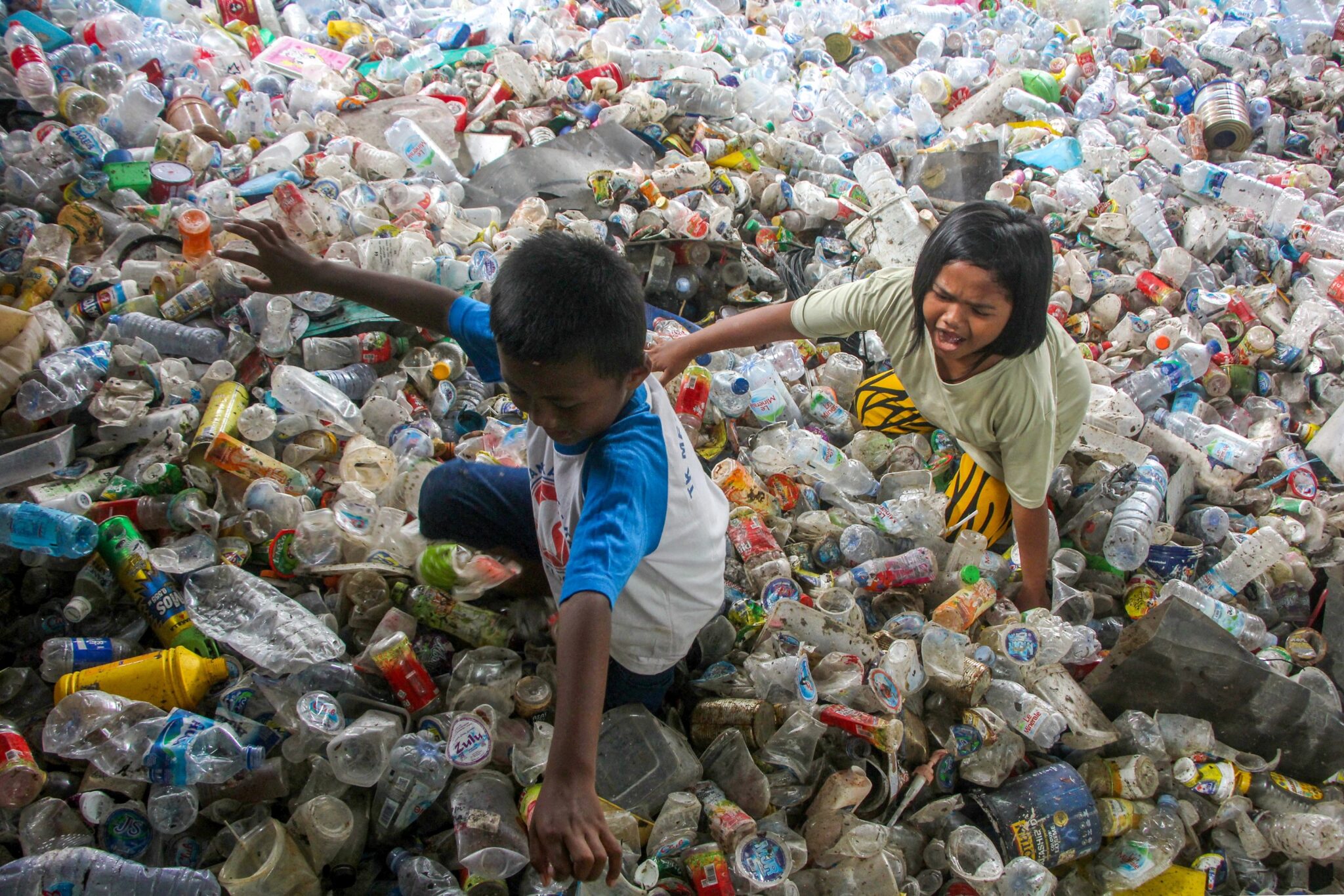
The vast amounts of plastics and chemicals produced by humanity are exceeding “planetary limits” and production constraints need urgent thought, scientists conclude for the first time.
With a cocktail of 350,000 man-made synthetic products and significant volumes released into the atmosphere or directly or indirectly into the environment, “the effects we are beginning to observe are large enough to affect critical functions of planet Earth and its ecosystems”explains Bethanie Carney Almroth, one of the co-authors of the Stockholm Resilience Center study, in an interview with AFP.
The study marks the start of negotiations on plastic pollution “from source to sea” will be under UN consideration at the end of February 2022 in Nairobi, Kenya.
While any effort to prevent these materials from entering the environment is worthwhile, the magnitude of the problem is driving scientists to push for more radical solutions, such as a maximum production ceiling.
Especially since recycling shows mediocre results, with for example less than 10% of the world’s recycled plastic, for production that has doubled since 2000 and currently peaks at 367 million tons.
According to scientific studies, plastic on Earth today is four times the biomass of all living animals.
What we’re trying to say is maybe enough is enough, maybe we can’t tolerate this any longer. Maybe we should limit production, say we can’t produce as much as a certain level.”
Bethanie Carney Almroth
For several years now, the Stockholm Resilience Center has been carrying out reference work on “planetary boundaries”in nine areas (climate change, use of fresh water, ocean acidification, etc.) Objective: to determine whether humanity is in a “safe space” perpetually, or if, on the contrary, the limits are exceeded and threaten the future of the planet.
The “new entities”ie all chemical products made by man (plastics, antibiotics, pesticides …) and metals in their unnatural concentration, until now remained a question mark and the complex conclusion . “We are only beginning to understand the long-term effects of these exposures”says the researcher.
Wrong direction
Not only are these products innumerable and the data on their risks non-existent or subject to industrial secrecy. But they are by definition contemporaneous with the industrial age, unlike the other parameters set by the . to be studied “planetary boundaries” that allow comparison over 10,000 years or more.
Pesticides that kill organisms indiscriminately, ingestion of plastic by living creatures, hormonal or reproductive effects… Chemical pollution threatens the environment by damaging the physical and biological processes on which all life depends, a phenomenon that is exacerbated when the product is left over a long period of time. has persistence.
“We are talking about 350,000 different substances. We know nothing about the vast majority of them, their production volume or their stability, or their effect on the environment or their toxicity. We know what some of them are. But for the most part, we don’t know anything. †
Bethanie Carney Almroth
Even the most comprehensive databases, such as “Reach” in the European Union, only reach 150,000 products, of which only a third are the subject of extensive toxicity studies.
Note these “holes in the racket”the team then focused on what is known, and these partial elements were enough for an alarming conclusion. “If we take all these scattered bits and the evolution over time (..) we could say that all the arrows are pointing in the wrong direction”explains the scientist from the University of Gothenburg.
For the study’s 14 co-authors, “We still have time to turn this situation around, but we need urgent and ambitious action at the global level”†
She adds: “Obviously there is no magic bullet because many of these products are things that we use and are needed in our lives, even though many are not”recognizes Bethanie Carney Almroth.
But for her, all the efforts at the level of initial production or waste management will not allow to ignore a decrease in the volumes produced. “It seems obvious, but it has only recently been taken for granted: the more you produce, the more you reject”she pleads.
(AFP)